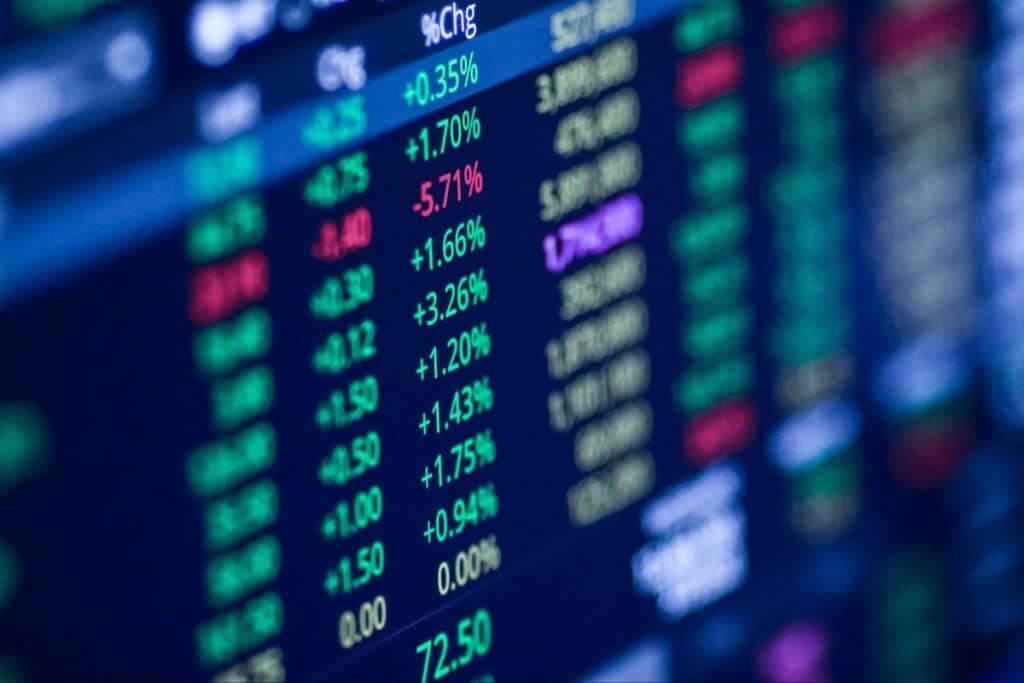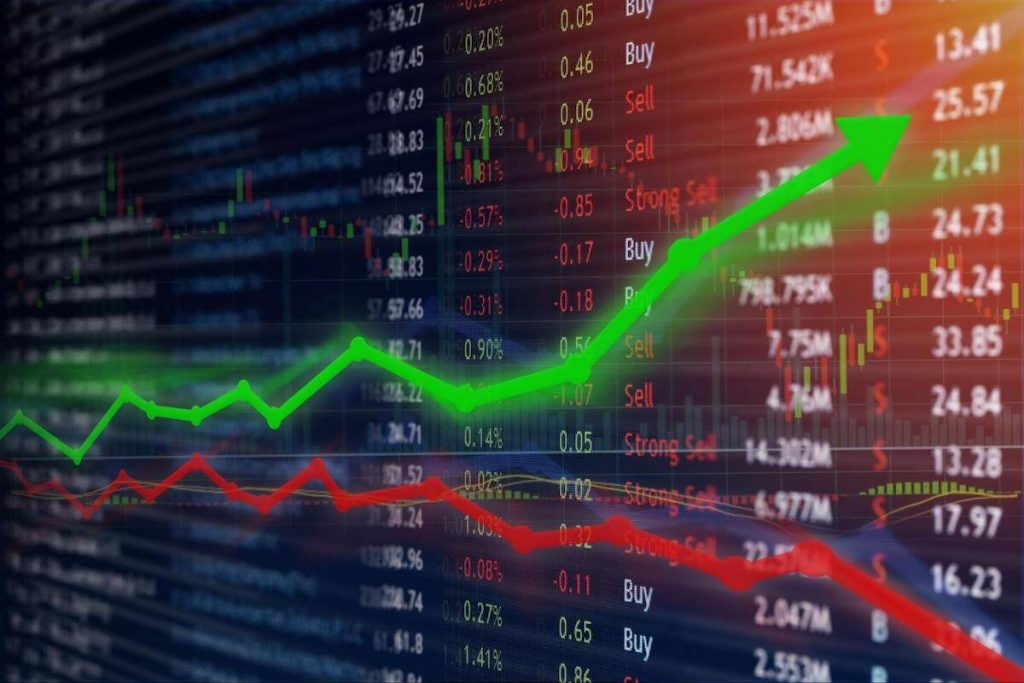
If you’ve been following markets the past several decades, there is no doubt you’ve heard the term algorithmic trading. There are both staunch opponents and proponents of this method. Some argue algorithmic trading rips off normal investors, while proponents say it provides liquidity to markets and helps “lubricate” prices so there is always a machine (or person) willing to buy or sell a security to you.
Algorithmic trading — also known as auto, algo-trading, or sometimes black-box trading — uses highly sophisticated mathematical models, such as statistical models, machine learning, deep learning, artificial intelligence (AI), and other concepts to pick and execute trades faster and more frequently than human investors can.
In this article, we’ll explain how algorithmic trading works, the pros and cons, and what tools and resources investors need to implement profitable algorithmic style trading as part of a diverse investment strategy.
What Is Algorithmic Trading?
At its core, algorithmic trading evolved out of the need for speed. There were traders who realized they could build systems that could react much faster than any human could. For example, if you follow unemployment release numbers, you will see assets move almost instantly as soon as the unemployment numbers are released. This is partly because algorithmic systems are reacting quickly to the news in an automated fashion.
Long gone are the days when traders shouted buy and sell orders across crowded and noisy trading floors worldwide. Investors and brokers calling in what they want to buy or sell and for what price is a memory of a bygone era.
At its core, AI software, and algorithmic systems and platforms are designed to increase profits for investors, hedge funds, and brokers. Or at the very least, prevent funds and investors from making significant losses when the market moves the wrong way.
In case you’ve been following the recent news on ChatGPT, algorithms have been used in the financial services sector long before the recent popular explosion in tools like OpenAI’s ChatGPT.
Although some investors are now starting to use these new tools, there’s already a large and established market for AI-based financial trading software and platforms available for everyone, from newbie investors to seasoned hedge fund managers.
A Securities and Exchange Commission (SEC) staff report in 2020 confirmed what everyone in the sector already knew, “Electronic trading and algorithmic trading … are both widespread and integral to the operation of our capital markets.”
Of course, human investors still make many decisions regarding trading strategies, including picking and refining the algorithmic models, trading parameters, and other criteria that impact how this software operates.
What’s an example of an algorithmic system? Algorithmic trading could be as simple as a software program being instructed to buy 100 shares of ABC stock when the price hits a specific threshold and then sell them when it moves up 15%.
In this simple example, moving averages (e.g., 50-day, 200-day, etc.) and the day-to-day fluctuations and indicators act as integral data points for when an algorithm executes a trade.
Automated systems take away the need for investors and analysts to constantly monitor and analyze charts and trends. Even with the best alerts, updates, and will power in the world, investors are going to miss opportunities. Algorithmic models don’t miss anything, so investors benefit from a system that’s constantly alert to execute the trades they want.
But algorithmic models can implement far more complicated and fast-moving strategies than the example mentioned above.
How Does Algorithmic Trading Work?

Algorithmic trading relies on high-quality real-time market data (in vast quantities), computer programming, and data science to create algorithmic trading systems that investors can use.
Algorithmic traders using these platforms and tools within investment strategies trust machine-learning-based models to execute trades. Depending on the platform’s functionality and features, investors and analysts can influence or customize the trading parameters, criteria, and formulas used for making buy, sell, and hold decisions.
In most cases, a combination of real-time live trading and historical data is fed into algorithmic programs, and then, trades are executed according to hundreds, thousands, and even millions of micro-parameters.
These trading systems monitor and buy and sell trades across a vast range of asset classes: stocks, currencies, forex, crypto, commodities, bonds, and structured investment vehicles, such as exchange-traded funds (ETFs).
In recent years, the optimization of the mathematical models, algorithms, data sources, and technology that make algorithmic trading work is accelerating. According to the Bank for International Settlements (BIS), there’s a competitive technology arms race underway to give investors, banks, and hedge funds any kind of advantage when it comes to algorithmic trading.
In its Working Paper No. 955, the BIS says this hyper-accelerated technology arms race involves the following resources being invested in and deployed: “Microwave links between market centers, trans-oceanic fiber-optic cables, putting trading algorithms onto hardware as opposed to software, co-location rights and proprietary data feeds from exchanges, real estate adjacent to and even on the rooftops of exchanges, and, perhaps most importantly, high-quality human capital.”
An integral part of this technology arms race is focused on automated trades getting even faster.
As the BIS Working Paper No. 955 says, “Just a decade ago, the speed race was commonly measured in milliseconds (thousandths of a second); it is now measured in microseconds (millionths) and even nanoseconds (billionths).”
Most algo-trading is high-frequency, with pre-programmed parameters making decisions faster than any human could. As the name suggests, high-frequency trading (HFT) happens quickly, although it isn’t limited to short-term investment activities.
Pros and Cons of Algorithmic Trading for Investors
As with any investment application and strategy, there are pros and cons associated with algorithmic trading. It also comes down to an investor’s preference for how much control they give to software and algorithms.
Pros of Algorithmic Trading
- Price advantages: Investment assets being monitored are bought and sold at the best possible time, ensuring profits are maximized and losses kept to a minimum.
- Speed: Because trade orders are instant and timed with hyper-specificity, it reduces latency and the risk of any noticeable changes between the decision and execution.
- Lower costs: Either because of the size or speed of the trades, transaction costs are also kept to a minimum.
- No mistakes: Unless a trader intervenes, errors, fear, or hope can’t sway an algorithm. They execute when the exact conditions are met, so there’s no danger of hesitation impacting when an equity is bought or sold.
- Backtesting: Through backtesting and other automated checks, trading strategies can be validated and even optimized by the AI models.
- Systematic: Compared to traditional methods, such as manually analyzing technical indicators or fundamental analysis, algorithmic trading is 100% data-centric and takes human emotion, such as fear or hubris, out of the equation.
Despite these numerous advantages, there are drawbacks to algorithmic trading. Otherwise, wouldn’t investors and analysts have given up and left everything to AI software already?
Cons of Algorithmic Trading
- Black swans: Unexpected and often unprecedented events, such as wars, natural disasters, and pandemics, can dramatically move markets, usually for the worse. Human traders have to move fast when these happen. But algorithms aren’t equipped to cope with the unexpected, which can result in massive losses.
- Flash crashes: Flash crashes have been caused by algorithmic trading models wiping billions off currencies and stock market values. The most serious was the May 6, 2010, flash crash that wiped $1 trillion in equity value off the S&P, Dow Jones, and Nasdaq in under an hour. Criminal charges were filed against the responsible trader.
- Lack of qualitative judgment: Algorithms can’t consider the role human emotions play in investment decisions. Say an algorithm expects Apple’s stock to jump following a new product announcement based on historical data. Except, market demand amongst consumers is low thanks to inflation and reduced economic prospects. How can an AI model take this into account? It can’t unless developers retrain the model enough to factor this sort of consideration in.
- Technical vulnerabilities: No software is immune to cyberattacks. Even the smartest and most sophisticated algorithmic models and trading platforms are potentially vulnerable to manipulation. Algorithmic models also make traders over-reliant on technology. For example, Knight Capital Group famously had a technical error that resulted in a $440mm loss.
- Difficult to customize: In most cases, algorithmic models are expensive to develop, train, and build. So when an investor or firm deploys an AI tool, they take this out of the box, as you do with other software products. It can be difficult to customize a model according to specific trading strategies, forcing firms to rely on several AI trading platforms ⏤ which can prove expensive ⏤ or to spend time trying out different options to find the best one for their needs.
Now let’s take a closer look at five of the most popular algorithmic trading strategies that investors use.
5 Algorithmic Trading Strategies

There are dozens, if not hundreds, of algorithmic trading strategies ⏤ and most algorithmic or AI-based trading software uses numerous options or their own proprietary model. So we’ve focused on five of the most widely used amongst investors and day traders.
1. Algorithmic Arbitrage
Arbitrage is the act of buying a stock on one market and selling it on the other. Taking advantage of the sometimes tiny price difference adds up when you do this often enough. Because speed is essential to exploit arbitrage opportunities, algorithmic trading models are ideal for performing these trades.
2. Mean Reversion
A mean reversion strategy works on the assumption that when an asset is unusually high or low that it will revert to the mean. Algorithms can use historical data, technical indicators, and other factors to pinpoint the mean — and the prices above and below that range — so buy and sell orders can be executed whenever an asset moves outside of the mean (average value).
3. Auto Algorithmic Trades Before or After Index Funds Rebalance
Index funds are designed to rebalance over fixed timescales to ensure holdings are in line with benchmark indices. Algorithmic traders can use this knowledge to make profitable trades either just before or after an index fund rebalances. Algorithms can be preset to leverage price differences across a portfolio.
4. Volume-Weighted Average Price
Volume-weighted average price (VWAP) is a popular algorithmic trading strategy that dynamically releases smaller segments of a large trading order to benefit from micro-price adjustments while trying to avoid alerting other buyers and sellers to its execution. This can be especially useful for hedge funds and pension fund managers who don’t want competitors to notice what they’re doing.
5. Delta Trading
Delta trading, also known as a delta-neutral strategy, offsets positive and negative deltas according to predetermined ratios. For example, a trade balances the price of an asset and its underlying derivative, and algorithms buy and sell according to the price movements between these two assets.
What Technology or Resources Are Needed for Algorithmic Trading?
Any form of algorithmic model for investments is purely quantitative trading. As such, trading platforms that monitor market conditions and stock movement metrics in real time, such as liquidity, volatility, and technical indicators, need large volumes of high-quality equities data.
One of the most effective ways to source this data for algorithmic models to assess risk management and implement trades based on price movements is with a stock market API.
Use Clean Data With Your Algorithmic Trading Strategy
Algorithmic trading is a popular as well as cost- and time-effective way to increase your investment portfolio diversity and profit from market volatility, inter-exchange price differences, arbitrage, and other opportunities.
Algo trading has its pros and cons. There are a lot of options on the market and investors might have to try out several tools and platforms before finding one that’s right for their investment strategy, preferences, and approach to trading.
Once you’ve found an algorithmic trading platform that works, you can almost plug it in and forget it. Almost, but not completely, as it’s worth monitoring and tweaking trading criteria and the investment criteria the algorithm uses, as much as it’s possible for you to do that.
It’s essential to have access to the highest-quality and cleanest financial data to make your trading algorithm function effectively.
Tiingo offers 20 years’ worth of the cleanest financial markets data that you can feed into algorithmic trading software using any of Tiingo’s APIs, including:
Train your algorithmic trading models and software to make smarter, faster, and more accurate decisions with Tiingo’s clean and accurate stock market data.
Leave a Reply